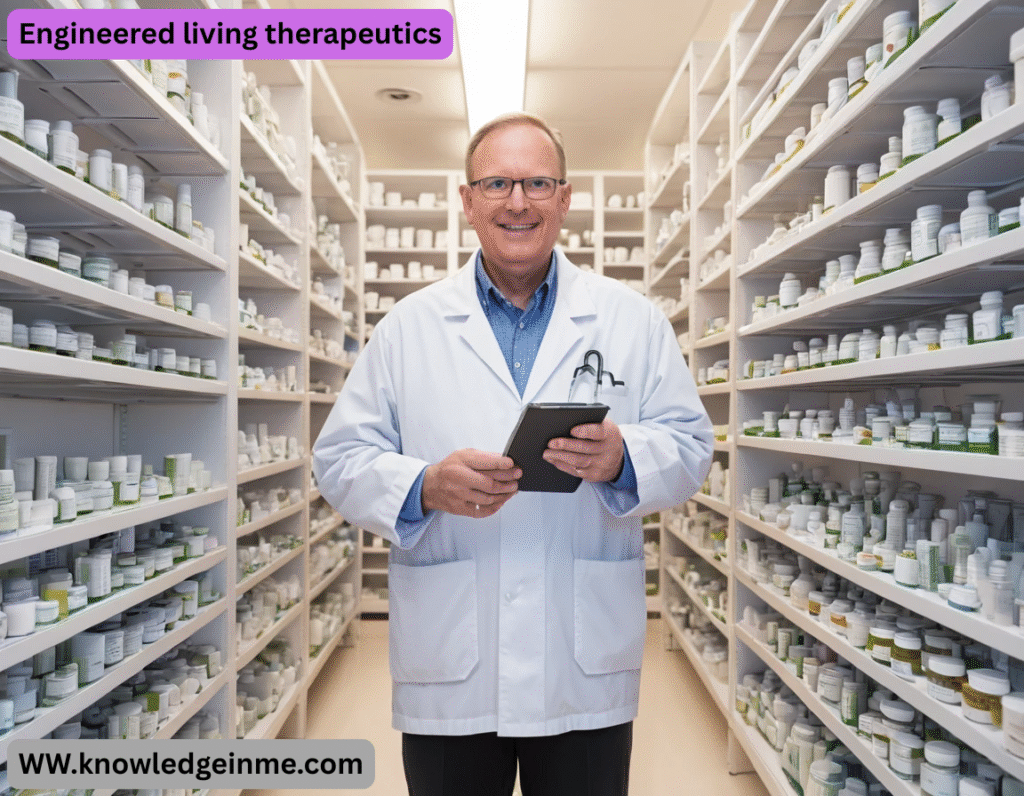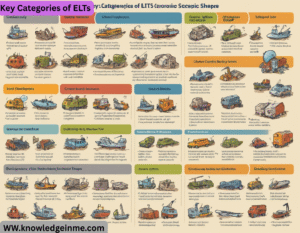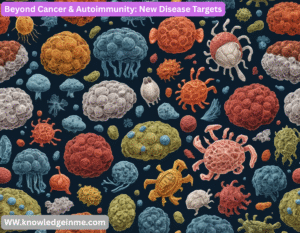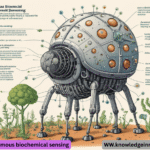Engineered Living Therapeutics (ELTs) represent a cutting-edge approach in medicine that uses genetically modified or engineered living cells to treat diseases. These therapies leverage the natural capabilities of cells—such as bacteria, immune cells, or stem cells—enhanced with synthetic biology to target specific conditions with high precision.
Key Types of ELTs:
Engineered Bacteria:
- Example: Synlogic’s SYNB1618 (modified E. coli for phenylketonuria/PKU treatment).
- Used for metabolic disorders, infections, or gut microbiome modulation.
CAR-T Cell Therapy:
- Now being adapted for autoimmune diseases (e.g., lupus, type 1 diabetes).
Stem Cell Based Therapies:
- Engineered stem cells for tissue regeneration (e.g., Parkinson’s, spinal cord injuries).
- Companies like Blue Rock Therapeutics develop iPSC-derived therapies.
Oncolytic Viruses:
- Viruses engineered to selectively kill cancer cells (e.g., T-VEC for melanoma).
Microbiome Therapies:
- Genetically modified probiotics (e.g., Vedanta Biosciences’ VE202 for IBD).
Advantages:
- Dynamic Response: Living cells adapt (e.g., sense and secrete drugs in real-time).
- Targeted Delivery: Reduced off-target effects compared to traditional drugs.
- Durability: Potential for long-term or even curative effects (e.g., CAR-T cells persist in the body).
Challenges:
- Safety: Risk of immune reactions or unintended cell proliferation.
- Manufacturing: Complex production and quality control.
- Regulation: Evolving frameworks for genetically modified organisms (GMOs) in medicine.
Key Categories of ELTs
Engineered Bacteria & Microbial Therapies
- How it works: Bacteria are modified to produce therapeutic molecules, compete with pathogens, or modulate the microbiome.
Examples & Applications: - SYNB1618 / SYNB1934 (Synlogic) – Engineered E. coli that breaks down phenylalanine for PKU (phenylketonuria).
- VE202 (Vedanta Biosciences) – A consortium of bacteria designed to treat inflammatory bowel disease (IBD) by restoring gut balance.
- PD-1 Expressing Bacteria (BioMed Valley Discoveries) – Bacteria engineered to deliver anti-PD-1 directly into tumors, enhancing immunotherapy.
- Lactococcus lactis (ActoBio Therapeutics) – Modified to secrete anti-inflammatory cytokines for type 1 diabetes and celiac disease.
Advantages:
Cheap to produce
Can colonize the gut or tumors for sustained effects
Can be orally administered
Challenges:
- Risk of unintended bacterial evolution
Immune system may clear them too quickly
CAR T & Engineered Immune Cells
- How it works: Immune cells (usually T cells) are extracted, genetically reprogrammed to target disease, and reinfused.
Examples & Applications: - Kymriah & Yescarta (Novartis, Gilead) – FDA-approved CAR-T therapies for blood cancers (leukemia, lymphoma).
- BCMA CAR-T (Abecma, Carvykti) – For multiple myeloma.
- Autoimmune CAR-T (Cabaletta Bio, Kyverna) – Engineered to eliminate autoreactive B cells in lupus, myasthenia gravis, and type 1 diabetes.
- TIL Therapy (Iovance) – Tumor-infiltrating lymphocytes expanded and reinfused for solid tumors (melanoma, cervical cancer).
Next-Gen Innovations:
- Universal (Off-the-Shelf) CAR-T (Allogene, CRISPR Therapeutics) – Uses gene editing to avoid immune rejection.
- Logic-Gated CAR-T (Senti Bio) – Cells engineered to respond only when multiple cancer signals are present (reducing off-target effects).
Advantages:
- Potentially curative for some cancers
Can evolve inside the body for long-term protection
Challenges:
- Cytokine release syndrome (CRS) risk
Expensive (~$500K per treatment)
Examples & Applications:
- VX-880 (Vertex Pharma) – Stem cell-derived pancreatic islet cells for type 1 diabetes.
- DA01 (BlueRock Therapeutics) – Dopamine-producing neurons for Parkinson’s disease.
- CRISPR-Edited Stem Cells (Graphite Bio, Editas) – For sickle cell disease, beta-thalassemia.
Future Directions:
- Organoid Transplants – Lab-grown mini-organs for disease modeling and repair.
- In Vivo Reprogramming – Turning a patient’s own cells into stem cells inside the body.
Advantages:
- Can regenerate tissues (heart, liver, neurons)
Potential one-time curative treatment
Challenges:
- Risk of teratomas (if cells grow uncontrollably)
Immune rejection (unless autologous)
Oncolytic Viruses
- How it works: Viruses engineered to selectively infect and kill cancer cells while sparing healthy tissue.
Examples & Applications: - T-VEC (Imlygic, Amgen) – Modified herpes virus for melanoma.
- Pelareorep (Reolysin, Oncolytics Biotech) – A reovirus that attacks solid tumors and boosts immunotherapy.
- CRISPR-Enhanced Viruses – Designed to evade the immune system and deliver payloads (e.g., checkpoint inhibitors).
Advantages:
- Can trigger strong anti-tumor immune responses
Can be combined with CAR-T or checkpoint inhibitors
Challenges:
- Limited efficacy as monotherapy
Immune system may neutralize the virus
Emerging Technologies in ELTs
Synthetic Biology & Biosensors
- Cells as Living Diagnostics: Engineered to detect disease markers (e.g., high glucose, inflammation) and respond by releasing drugs.
- CRISPR-Based Logic Circuits: Cells make “decisions” (e.g., “IF tumor signal present, THEN kill cancer cell”).
Biohybrid Systems
- Bacterial Microrobots: Bacteria carrying nanoparticles for targeted drug delivery.
- Cell-Coated Implants: Medical devices coated with engineered cells to prevent rejection.
In Vivo Cell Engineering
- Instead of extracting cells, scientists are developing ways to reprogram cells inside the body (e.g., using mRNA or viral vectors).
Future Outlook
- 2025-2030: More approved ELTs for cancer, autoimmune diseases, and rare genetic disorders.
- 2030+: ELTs may become mainstream for chronic diseases, replacing traditional biologics.
Beyond Cancer & Autoimmunity: New Disease Targets
Neurodegenerative Diseases
- Problem: Diseases like Alzheimer’s and ALS lack treatments that halt progression.
ELT Solutions: - Microglia Editing (CRISPR + Stem Cells) – Replace dysfunctional brain immune cells with engineered versions that clear toxic proteins (e.g., amyloid-beta).
- Exosome-Producing Bacteria – Engineered gut microbes that secrete neuroprotective exosomes (e.g., Axial Therapeutics for Parkinson’s).
Cardiovascular Repair
Problem: Heart tissue doesn’t regenerate after infarction.
ELT Solutions:
- mRNA-Reprogrammed Fibroblasts – Inject lipid nanoparticles (LNPs) to convert scar tissue into beating cardiomyocytes (Capricor Therapeutics).
- Bacteria-Driven Angiogenesis – Engineered Lactobacillus secreting VEGF to promote blood vessel growth in ischemic limbs.
Infectious Diseases (Beyond Vaccines)
- Problem: Antibiotic resistance and chronic infections (e.g., HIV, biofilm-based infections).
ELT Solutions: - Phage-Engineered T Cells – T cells armed with bacteriophages to hunt antibiotic-resistant bacteria (Adaptive Phage Therapeutics).
- “Living Antibiotics” – E. coli engineered to lyse P. aeruginosa biofilms in cystic fibrosis lungs (Eligo Bioscience).
Disruptive Delivery Mechanisms
Autonomous Drug Factories Inside the Body
- Example: Synlogic’s bacteria that sense inflammation and locally produce anti-IL-10.
- Future: Cells that adjust insulin/GLP-1 secretion in real-time for diabetes.
Wearable & Implantable Bioreactors
- Bioartificial Pancreas (ViaCyte, Sernova) – Encapsulated stem cells under the skin releasing insulin.
- Lymph Node Factories – CAR-T cells engineered to reside in lymph nodes, acting as “drug pumps” for systemic diseases.
Inhalable Living Therapies
- Lung-Resident Bacteria – For asthma (secrete IL-10) or pulmonary fibrosis (deliver MMP inhibitors).
- Frozen CAR-T Nebulizers – Directly target lung tumors (University of Pennsylvania trial).
Beyond Cells: Hybrid Living/Nanotech Systems
Bacteria-Driven Nanobots
- Magnetotactic Bacteria (Bionaut Labs) – Remote-controlled microbots for targeted drug delivery in the brain.
DNA Origami + Engineered Cells
- Cells coated with DNA nanostructures that “unlock” only in tumor microenvironments.
Mitochondrial Transplants
- Engineered mitochondria (from stem cells) injected into failing tissues to restore energy production.
The AI-ELT Convergence
Machine Learning for Strain Design
Examples:
- Ginkgo Bioworks uses AI to predict optimal bacterial chassis for therapeutics.
- DeepMind’s Alpha Fold predicts protein interactions for engineered cell therapies.
Closed-Loop Smart Therapies
- Glucose-Sensing CAR-T – T cells that adjust activity based on real-time metabolic signals.
- Neural Interface-Controlled Cells – Brain implants that direct engineered cells via wireless signals (e.g., for epilepsy).






